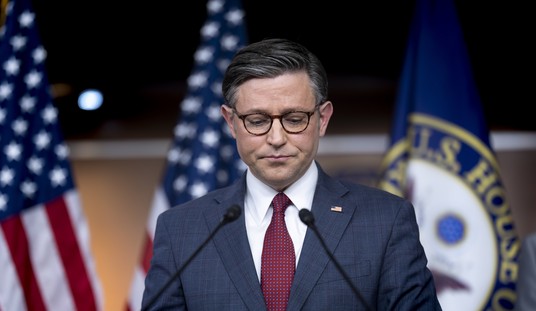Despite a bleak decade for air travel—the result of the 9/11 terrorist attacks and the post-2008 economic downturn—local governments, aided by Washington, have been pouring billions of dollars into airport development and expansion. They claim that these expensive, debt-laden facilities will spur growth in economically precarious locales by attracting businesses that want more air connections. But from Cincinnati to the Florida Panhandle, this Field of Dreams approach—build it, and they will come—hasn’t worked.
In 1978, Washington transformed America’s airline industry, deregulating fares, routes, and the entry of new competitors, which federal oversight had long restricted. A host of low-cost carriers arrived on the scene, and some of the established airlines, now free to enter new markets, moved toward a hub model, in which passengers fly to a central airport and transfer to connecting flights. Deregulation also sent fares plummeting. Today, the average plane ticket is 30 percent to 40 percent cheaper than it was in the regulated era, adjusted for inflation. Business soared, with passenger volume increasing from about 270 million passengers annually in the late 1970s to about 730 million last year. Employment in the industry exploded—up 35 percent, to about 450,000 people.
Over the troubled 2000s, however, airline employment declined, and passenger traffic rose only slightly—growing just 0.2 percent per year from 2000 through 2010, compared with about 4.6 percent annually in the 1980s and 1990s. The harsh business climate forced many big airlines to shrink, merge, or go bankrupt, and they began abandoning unprofitable routes and airports that didn’t generate sufficient revenue. Because airports rely heavily on the fees that airlines pay them, which vary according to use, the shift hit them hard, especially those that already owed a lot of money to pay off their construction or expansion. And airports that had expanded to accommodate hub traffic saw unprecedented declines in business, since they generated most of it from passengers taking connecting flights, which airlines suddenly eliminated or shifted elsewhere. Airports that relied on local business lost far less traffic.
Recommended
It’s misguided to think that airport expansion itself will lure businesses to a region by offering them more flights. In fact, airport expansions often increase ticket prices, driving businesses away. After airports have built new facilities, they pass the expense on to passengers in the form of pricier tickets. If an airport has expanded to become a hub, moreover, passengers there may have to pay the “hub premium” that a dominant airline at a location often levies to make up for losses at other facilities.
You can see those extra charges reflected in the sky-high fares at Cincinnati/Northern Kentucky International Airport, a Delta hub and winner of the top spot in Forbes’s 2009 list of “rip-off airports.” Last year, an average ticket out of the airport cost $526, compared with $372 in nearby Dayton, Ohio, and $387 in Indianapolis. International flights averaged $1,408, 36 percent more than the national average.
Is the airport really a reason to relocate to the area, as businesses often claim? The Cincinnati Business Courier found that three-quarters of the Cincinnati firms it surveyed were flying employees out of the Dayton airport, more than an hour away by car. “Unless you’re suffering from delusion, you realize that the Cincinnati airport is now really in Dayton,” aviation expert Darryl Jenkins told the Cincinnati Enquirer. Similarly, a 2006 study found that nearly one-fifth of local fliers drove to other airports to avoid the hub’s high prices. Delta is now reducing flights from Cincinnati/Northern Kentucky, and passenger traffic at the airport is down 65 percent since 2005.
A new airport in the Florida Panhandle may be the most striking example of the folly of the if-you-build-it-they-will-come theory. Back in 2007, Florida officials and a private developer, the St. Joe Company, sold the FAA on the idea that constructing an international airport in sparsely populated Panama City (population: 37,000) would pay off by igniting rapid regional development. St. Joe, the largest landowner in northwestern Florida, donated 4,000 acres of the nearly 82,000 it owned in the area for the facility. In a nonbinding referendum, local residents voted decisively against a new airport, but Florida officials and the FAA proceeded anyway. The state kicked in about $110 million, the FAA added $72 million, and the county picked up the tab for much of the rest.
So Northwest Florida Beaches International Airport opened in 2010 at a cost of $300 million, the first major addition to America’s stock of airports since September 11. St. Joe got ready for the anticipated gold rush, announcing plans to build nearly 6,000 custom homes and 4.4 million square feet of commercial space on 80 acres surrounding the airport. But the gold rush failed to arrive, to put it mildly. Northwest Florida Beaches opened during a national housing bust, which sent home prices spiraling downward nearly 50 percent in Florida and resulted in nearly 500,000 foreclosures in the state in 2010. Disgruntled investors ousted St. Joe’s management and wrote down the value of the company’s real estate, including holdings around the airport, by 80 percent, or $375 million.
Southwest Airlines is currently operating at Northwest Florida Beaches, drawn to the airport by St. Joe’s willingness to offset any losses that it may incur. But the resulting air traffic hasn’t been remotely sufficient to transform the area.
For decades, the federal government has also spent tens of millions of dollars yearly to subsidize airports in smaller communities, arguing that their economies depend on connecting directly with the American air-travel system. Beginning in 1978 as a transitional, $7 million yearly subsidy for these airports, the Essential Air Service program now extends $200 million a year in grants to small airports to pay airlines to continue service when it isn’t profitable.
Last spring, investigative reporters for Scripps Howard News Service boarded 11 flights at subsidized airports and found just two of them carrying more than two passengers. Together, the 11 flights had 130 empty seats, for which taxpayers nevertheless paid a total of $155,000. On one flight between Baltimore and Hagerstown, Maryland—just 70 miles apart—the captain invited the one passenger who wasn’t a reporter to sit in the copilot’s seat. On a 300-mile flight between Las Vegas and Ely, Nevada, there were no passengers at all, other than the reporter. The federal government subsidized that route to the tune of $3,700 per passenger.
Defenders of the program, like the advocacy group Rural Air Service Alliance, call these airports “economic drivers.” But if that were the case, the economic activity generated by the subsidies would have made many of the facilities self-sustaining after all this time. The best that Congress could do earlier this year—in an era of massive federal deficits—was modify the program by dropping two airports, including the one in Ely, from the list of subsidies and saving a grand total of $3 million.
Public officials and local business leaders in areas looking to stimulate growth argue that they need to invest in airports, just as Atlanta and Dallas have. These officials are willing to risk millions of taxpayer dollars on a bet that it’s an airport that drives a local economy, not an energized economy that drives airport expansion. The results are empty terminals and gates, unused runways, and even flight-free airports. And taxpayers have been stuck with the bill.

























Join the conversation as a VIP Member